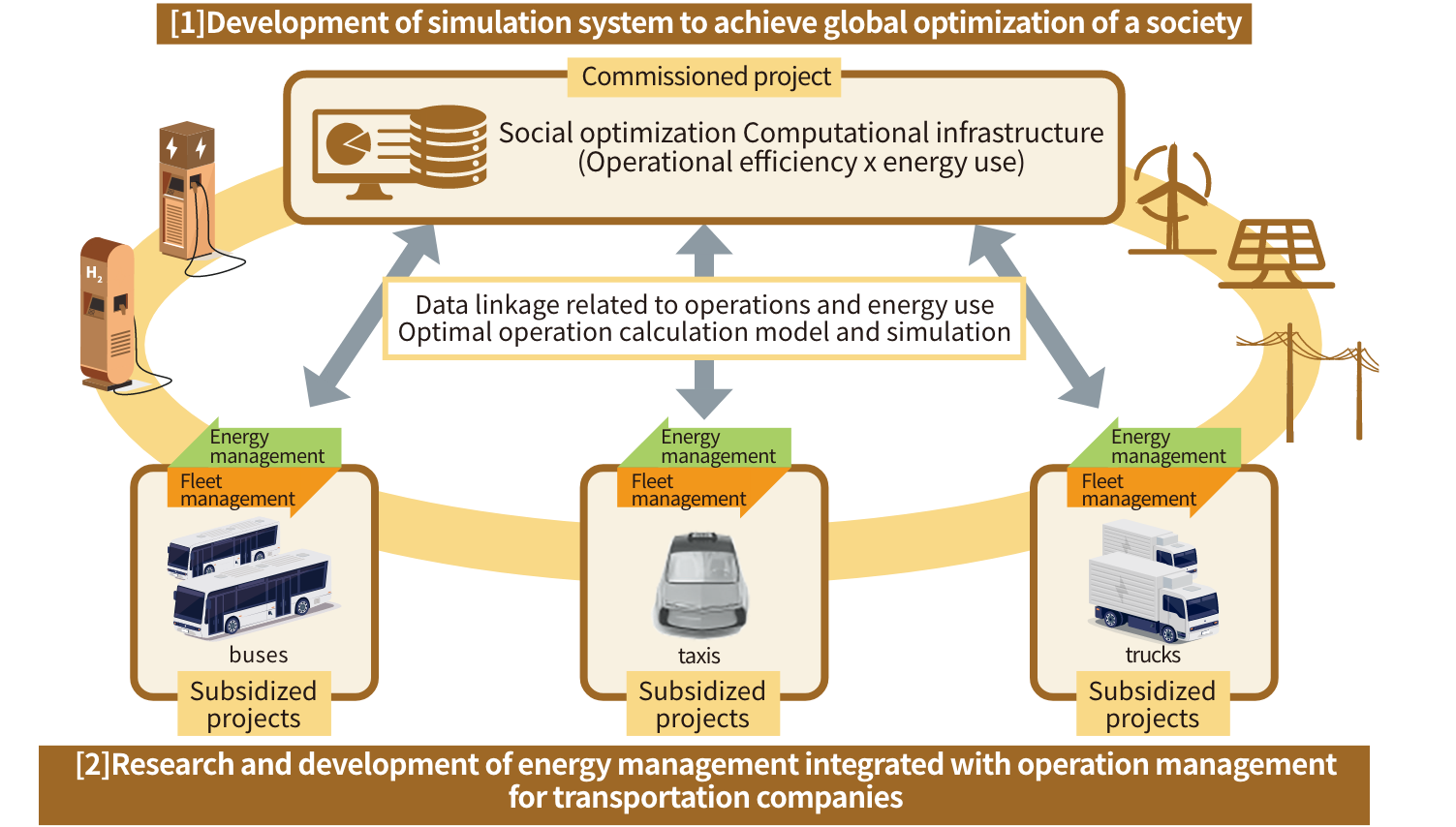
Project Overview
CO2 emissions from automobiles account for 16% of global CO2 emissions. In Japan, approximately 40% of such emissions originate from commercial vehicles. As efforts advance around the world to promote vehicle electrification to address global warming, the pace of introducing electric-powered commercial vehicles is lagging behind that of passenger cars due to their higher rates of utilization and larger levels of energy consumption.
Meeting the enormous recharging demand for commercial electric vehicles (EVs) may entail an increase in the social cost i.e., power grid reinforcement. In addition, transportation business costs due to the operation of commercial EVs are also expected to increase, including an increase in the amount of contracted electricity and installation/maintenance of charging facilities. Consequently, it has become necessary to develop integrated energy/fleet management systems that focus on the efficiency of commercial EV operations. It is also necessary to deploy and operate hydrogen fueling stations for commercial fuel cell electric vehicles (FCVs) in the most optimal manner since such stations are expensive to install.
To optimize costs and thereby encourage more widespread use of commercial EVs and FCVs, R&D and demonstration testing will be carried out under this project on the most suitable layouts for infrastructure and the optimization of energy consumption by using simulation technology based on external data, such as vehicle and driving operations, energy consumption, infrastructure utilization, and mapping. Moreover, with a view to collecting data for integrated energy/fleet management systems that promote the use of commercial EVs and FCVs, R&D will be carried out to demonstrate large-scale utilization of commercial EVs and FCVs by multiple transportation business operators.

Project Features
[1]R&D for development of simulation model to promote widespread use of commercial EVs
In anticipation of a time when commercial EVs are widely used, a simulation model for an integrated energy/fleet management system will be developed that optimizes energy consumption and results in lower CO₂ emissions by reducing loads on energy systems and identifying the most suitable layouts for charging and hydrogen fueling infrastructures. Also, analyses will be conducted to ensure that the model can be utilized by companies in the transportation sector.
[2]R&D for development of integrated energy/fleet management system to realize large-scale introduction of commercial EVs
Developing and demonstrating systems which integrate energy management and fleet management will be carried out by transportation business operators, through obtaining data related to operational plans, vehicle usage, and energy consumption in their areas of business. In addition, issues such as the utilization of external data and state-of-the-art technologies will be also addressed.
Furthermore, as part of this project, companies participating in subjects 1 and 2 above will also collaborate with each other in sharing data and verifying the utility of those systems.